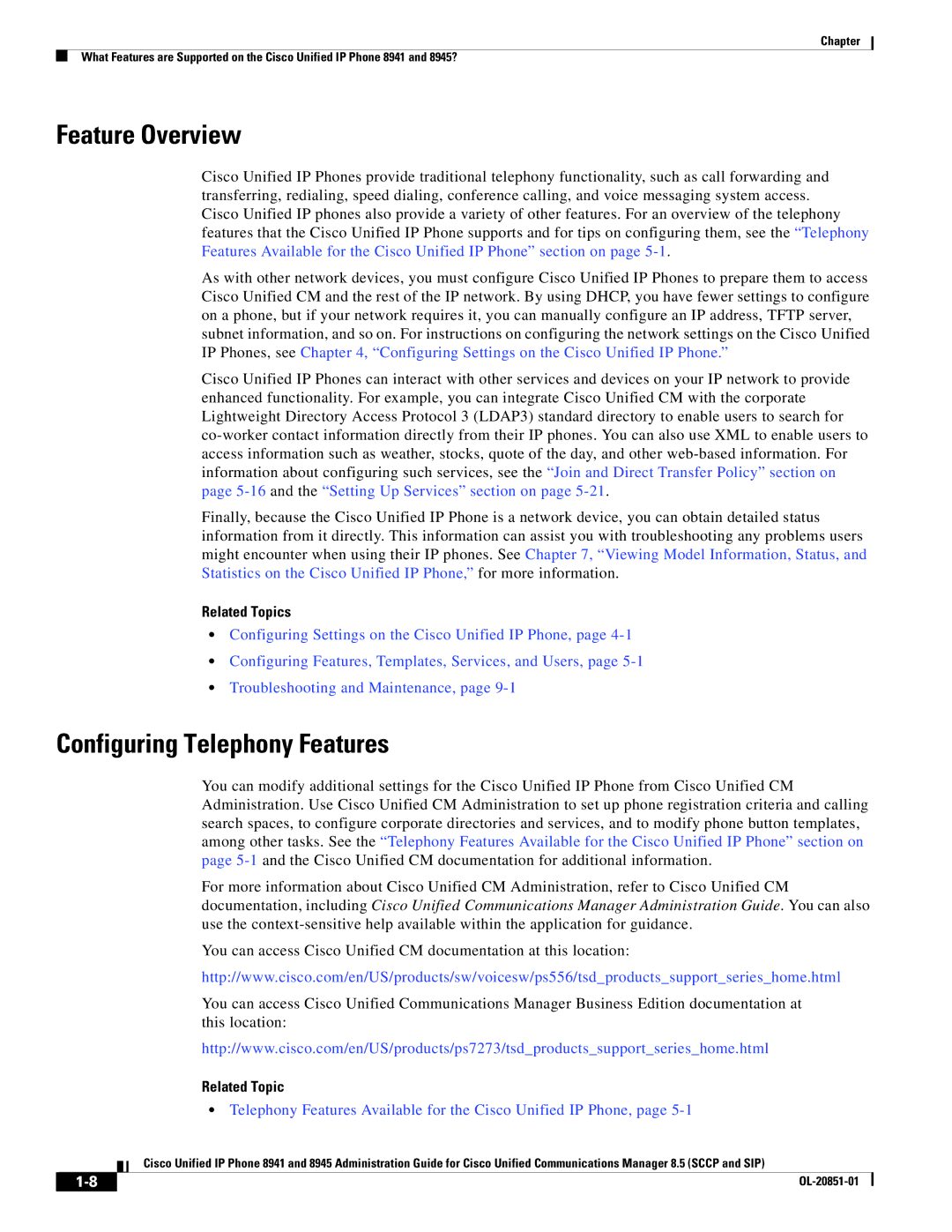
Chapter
What Features are Supported on the Cisco Unified IP Phone 8941 and 8945?
Feature Overview
Cisco Unified IP Phones provide traditional telephony functionality, such as call forwarding and transferring, redialing, speed dialing, conference calling, and voice messaging system access. Cisco Unified IP phones also provide a variety of other features. For an overview of the telephony features that the Cisco Unified IP Phone supports and for tips on configuring them, see the “Telephony Features Available for the Cisco Unified IP Phone” section on page
As with other network devices, you must configure Cisco Unified IP Phones to prepare them to access Cisco Unified CM and the rest of the IP network. By using DHCP, you have fewer settings to configure on a phone, but if your network requires it, you can manually configure an IP address, TFTP server, subnet information, and so on. For instructions on configuring the network settings on the Cisco Unified IP Phones, see Chapter 4, “Configuring Settings on the Cisco Unified IP Phone.”
Cisco Unified IP Phones can interact with other services and devices on your IP network to provide enhanced functionality. For example, you can integrate Cisco Unified CM with the corporate Lightweight Directory Access Protocol 3 (LDAP3) standard directory to enable users to search for
Finally, because the Cisco Unified IP Phone is a network device, you can obtain detailed status information from it directly. This information can assist you with troubleshooting any problems users might encounter when using their IP phones. See Chapter 7, “Viewing Model Information, Status, and Statistics on the Cisco Unified IP Phone,” for more information.
Related Topics
•Configuring Settings on the Cisco Unified IP Phone, page
•Configuring Features, Templates, Services, and Users, page
•Troubleshooting and Maintenance, page
Configuring Telephony Features
You can modify additional settings for the Cisco Unified IP Phone from Cisco Unified CM Administration. Use Cisco Unified CM Administration to set up phone registration criteria and calling search spaces, to configure corporate directories and services, and to modify phone button templates, among other tasks. See the “Telephony Features Available for the Cisco Unified IP Phone” section on page
For more information about Cisco Unified CM Administration, refer to Cisco Unified CM documentation, including Cisco Unified Communications Manager Administration Guide. You can also use the
You can access Cisco Unified CM documentation at this location:
http://www.cisco.com/en/US/products/sw/voicesw/ps556/tsd_products_support_series_home.html
You can access Cisco Unified Communications Manager Business Edition documentation at this location:
http://www.cisco.com/en/US/products/ps7273/tsd_products_support_series_home.html
Related Topic
•Telephony Features Available for the Cisco Unified IP Phone, page
Cisco Unified IP Phone 8941 and 8945 Administration Guide for Cisco Unified Communications Manager 8.5 (SCCP and SIP)
| ||
|
